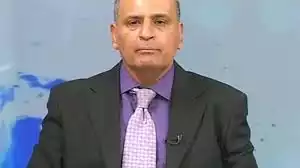Markets to see much better times from October onward: Sanjiv Bhasin
We are contrarian at these levels of capitulation and would expect the broader markets to bounce back from October onward.
The market reaction to the tax implications coupled with select NBFCs facing huge liquidity issues has hit sentiments.
The foreign selling is more driven by sentiment that has taken a beating since the Finance Minister allowed no roll back on tax implications on trusts, which constitute around 20 percent of foreign institutional investments in India.
We do not expect Nifty to fall to 10,000 in this year as that would see valuations get very cheap for Indian context and would see largecaps attract huge buying. Actually, we think a short term bottom may have already been formed close to the 200-DMA at 11,125 or at worst case 11,000. This may be tested in the next few days due to derivative expiry and accentuation of foreign selling sensing an opportunity for bears to drive down the index.
In near term, midcaps are seeing capitulation as valuations have become extremely compelling with written down value of select midcaps at the highest discount to actual asset prices. We also are contrarian at these levels of capitulation and would expect the broader markets to bounce back from October onward for the below reasons.
1. The bond yields at 6.35 percent are the lowest in last three years with global yields also falling sharply and the US Federal Reserve \"being the elephant in the room\" with talks of three rate cuts in 2019.
2. This means money cost for the Government of India is the lowest in three years and with approval to raise some money from issuing Sovereign bonds globally, the pressure on local borrowing may be much less than anticipated.
This also indicates that government spending on capex via roads, ports, infrastructure and social initiatives may increase sharply in the next 3/4 months. This could see more job creation and increased capex from private corporates also, which has been absent since last year.
3. Cost of money being low, we now expect the RBI to cut rates by at least 75 basis points till March 2020. This also will see pass on effect of the lower cost of borrowing percolating to industry & business. The mistrust created by the mismatch of asset/liability by select NBFC/Mutual funds should also start to see more resolutions in the next 30 days.
4. Midcap businesses are bearing the brunt of liquidity. The lower cost of money will give initiative for more productivity amd the missing link of NBFC\'s consumption & discretionary lending should get a lift off. Added to that would be the festive season which lifts car sales and durable consumption spending.
5. The global wall of liquidity should also start to see re-emergence of \'risk on\' trade with emerging market equities seeing huge inflows and India being one of the preferred choices.
6. With resolutions of most errant borrowers also seeing huge settlement, we expect corporate banks to be in the best shape in the last five years. Hence, the new round of lending to corporate India should see strong traction for the next three months.
7. In the Indian context, the missing links of consumption, investment and exports should be firing in next three months as the government takes the bull by the horns and relaxes norms/taxes to spur growth in consumption of auto and other durable, with also renewed incentives for low-cost housing and cement/steel, etc.
8. Investors are ignoring 3 key observations:
a) New demat accounts till now in 2019 have reached over 41 lakhs?the highest ever figure,
b) Recent CPSE ETF floated to raise around Rs 8,900 crore got subscriptions worth over Rs 48,000 crore. This tells appetite for good paper still exists,
c) The rupee has hit nearly 2-year high as less borrowing, lower yields, weaker USD and lower oil prices hovering near $65 with expectations of further decline can only bode good news for the fiscal.
We expect October onward, the base effect of earnings, liquidity and trust returning with a bang could herald very good times for midcaps in 2020.
New highs by late 2019 or early 2020 seem very much on the cards in the Indian context as excessive pessimism gives way to renewed optimism as the next 12 weeks see more government intervention and action to speed up growth.
Also, the 2017 liquidity excesses which saw mutual funds awash with money and poor allocations to promoter lending, etc. is rectified and midcaps are emerging as the best performers in 2020.
?



